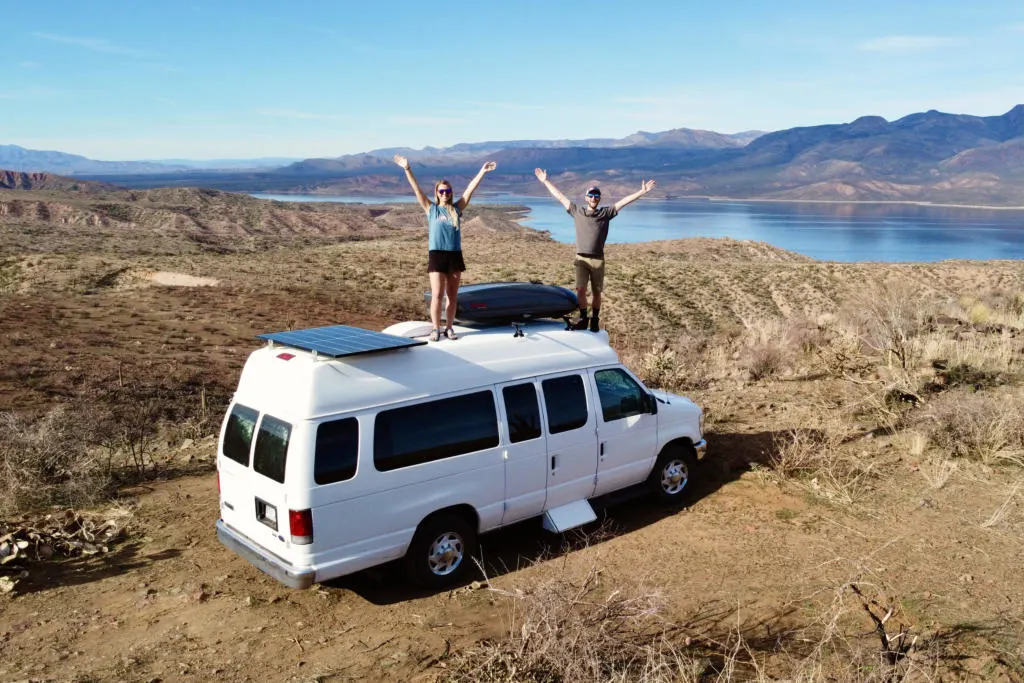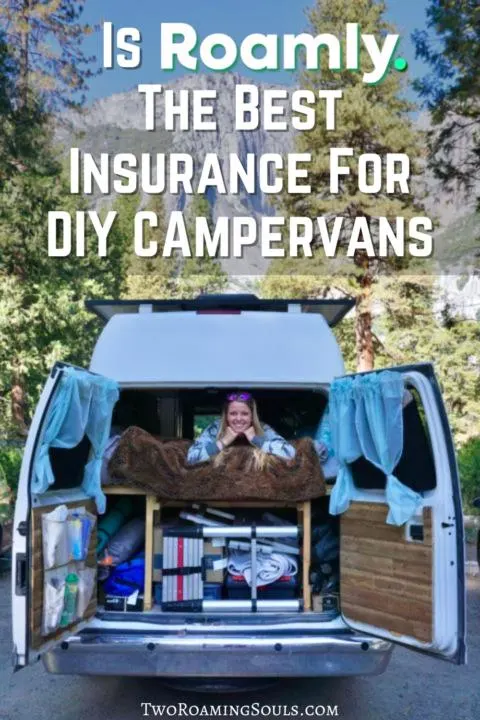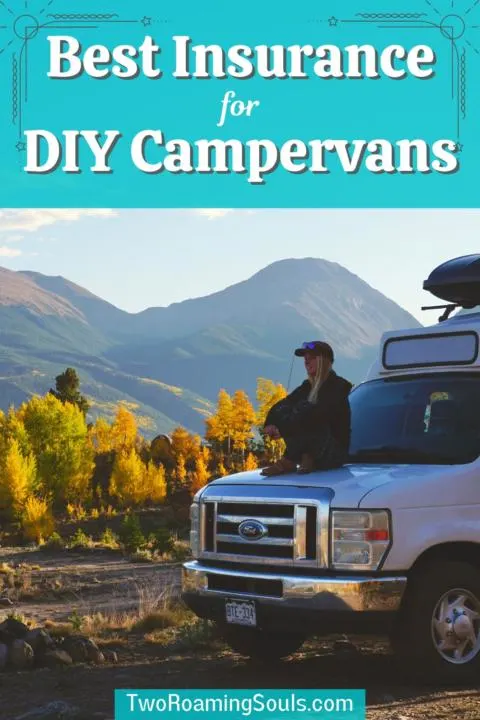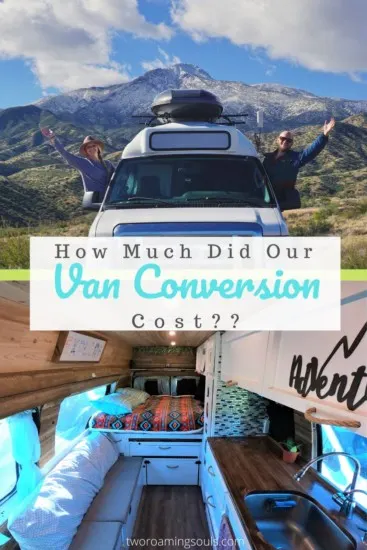
Searching for insurance for DIY campervans can be very frustrating. Most traditional insurance companies don’t quite know how to handle it. And that results in either flat-out rejection or expensive rates that don’t really fit your needs. You try to do the smart and responsible thing by insuring your campervan, but most interactions with insurance companies can leave you feeling uneasy. Roamly is a company founded in 2020, that aimed to change that. But is Roamly the best insurance for DIY Campervans? I spent hours on the phone with many insurance companies to find out which one offers the best insurance for DIY campervans.
(Even though this post is dedicated to self-built campervans, it’s worth noting that Roamly covers professional campervan conversions and RVs too.)
Which Insurance Companies Actually Cover DIY Campervans?
After all my searching, I only found three companies willing to insure a DIY campervan: Roamly, National General, and State Farm. These companies were willing to insure the van itself, as well as the conversion.
Just a note, there are a few companies like Good Sam and RVinsurance.com that are basically like a helpful insurance middle man. They will compare quotes from many different insurance companies and provide you with the best rate. It saves you from having to contact all companies individually and compare quotes for yourself. So, for example, we called Good Sam, and the only quote they found for DIY builds was from National General. (They were unaware of Roamly, but maybe that is soon to change.)
But these comparison services like Good Sam probably work much better if you have a traditional RV and actually have lots of options to compare. But as stated above, there are really only 3 companies I found who are actually writing policies for DIY campervans: Roamly, National General, and State Farm.
Finding Insurance For DIY Campervans Has Been Challenging
From our past experiences, we were so discouraged from searching for insurance for our self-built campervan. We eventually gave up and carried on with only liability insurance and coverage for the van itself, but no coverage for our conversion.
So at first, my intention was just to do a little research to write this post. But after we got a quote from Roamly, I was blown away. It was even cheaper than our traditional auto insurance with Geico which didn’t even cover the conversion, just the van itself. The Roamly policy actually included coverage for our conversion, $7,500 in emergency expenses, and coverage for up to $10k worth of personal belongings! We instantly moved ahead with Roamly and canceled our previous insurance.
If insurance is boring to you (like everyone), my advice is to stop reading this and go get a free quote from Roamly.
My initial reaction to Roamly is that they have the best prices, best customer service, and a comforting feeling that they actually understand and cover people living vanlife. But if you are someone who wants to get into the nitty-gritty, keep reading to see the comparison below.
Why Roamly Is Different
Roamly was founded as the sister company to Outdoorsy, a popular peer-to-peer campervan and RV rental marketplace. Roamly was built for RVers, by RVers. They recognized that traditional insurance companies were not offering the right policies that fit the campervan niche. One of the main problems they sought out to solve was that insurance companies did not allow peer-to-peer rentals. Roamly not only allows you to rent out your campervan, but even rewards it.
Roamly offers coverage that fits the need of professional and DIY campervan conversions. For too long, DIY campervan conversions have been something that insurance agencies didn’t want to go near. And the ones that did, charged insane premiums just for the perceived risk.
While most insurance companies still view RVs and campervans as toys or add-ons, Roamly appears to truly understand the evolved nature of these homes on wheels. They realized that many campervan owners found themselves underserved by regular auto insurance, but also not qualified for full RV insurance.
And dealing with Roamly to get insurance was surprisingly painless and comforting. The insurance agent was on the same page with us and we could tell that she truly understands the concept of full-time vanlife. With other companies, I have still felt like there is this pressure to lie to them. Like you need to pretend that you do live in a house or apartment. Or lie about the nature of your conversion in order to qualify for RV-type insurance.
Providing An Address
However, every insurance company, even Roamly, will require you to provide a “garaging address”. And this factor is one of the challenging parts for full-time vanlifers without a traditional mailing address. But insurance companies are not really set up to handle the concept of full-time nomads. They want to know where the vehicle will be “garaged” or really just where you live/drive most of the time. This is how they set your rates.
If you live in a city, your rates will be higher because accidents, thefts, etc are higher. So my advice, is that if you have the option, choose a garaging address in a more rural area because your insurance rates will be lower. A couple of common ways for full-time vanlifers to maintain an address is with a parent’s/friend’s house, campground/RV park, or virtual mailbox.
My Research To Find The Best Insurance For DIY Campervans
My research consisted of getting a quote from every company that is willing to insure a DIY campervan conversion. I tried my best to get identical coverage limits and deductibles from each company to have the best direct comparison.
Just a few details to contextualize my personal quotes…..
○ We got quoted in the state of Colorado, with garaging address in Steamboat Springs.
○ We got all our quotes as “full-timers” for our 2010 Ford E-350 self-converted campervan. “Full-Time” usually means living in the van more than 6 months out of the year.
○ I have a near-perfect driving record.
○ The price of our van + conversion is $17,715.
○ And all pricing is quoted for the full year, paid annually price (which usually provides some savings).
For a full breakdown of what our campervan cost to buy and convert, click here.
For reference, here are the basic terms of the near-identical policies I got quoted. A few differences between policies are noted at the bottom.
(All of these figures are “per incident”)
Liability: Bodily Injury: 100k per person, 300k per incident
Liability: Property Damage: 100k
Medical Payments: 5k per person
Uninsured Motorist: 100k per person, 300k per incident
Collision: $500 deductible
Comprehensive: $500 deductible
Uninsured Motorist Property Damage: $500 deductible
Emergency Expenses: Roamly & National General = $7,500, State Farm = $600
Personal Effects: Roamly & State Farm = $10,000, National General = $5,000
Roadside Service: National General (included), State Farm ($14/year)
So with three somewhat identical quotes from Roamly, National General, and State Farm, here are the final annual price quotes.
Roamly = $885
State Farm = 1,396
National General = $1,493
Roamly offered by far the lowest rate of the three.
And there were only a few differences between coverages.
National General would only offer personal effects coverage as a percentage of total vehicle value (which for us is $17,715). So the maximum they allowed was 5k, which we easily exceed in personal belongings. So that was at least one thing with National General that didn’t fit our needs perfectly.
State Farm only offered up to $600 for emergency expenses. Roamly and National General offered $7,500 for just a little bit more. And honestly, this might be one of the most valuable coverages for a vanlifer. If your van needs repair, you will be without a home and without a vehicle. Some mechanics might let you stay in your van overnight in their parking lot, but some may not. So having money to cover a hotel room and rental car is huge! The $600 per incident from State Farm seems a little low to fully cover the expenses of being displaced out of your van for several days.
What Is Required To Insure A DIY Campervan With Roamly?
Compared to other insurance companies, Roamly offers less strict requirements in order to qualify for insurance. Because as you know, not all self-built campervans are the same. And they are likely not registered as RV’s. So instead of requiring you to jump through hoops to get your campervan titled as an RV in your state, Roamly has very minimal requirements. This makes them a much better fit for even minimally converted DIY campervans.
DIY Campervans must include just one of the following to be insured:
○ Cooking area (include permanent stovetop, i.e. bolted down)
○ Refrigerator (can include bolted down RV coolers)
○ Bathroom facilities (does not require permanent plumbing)
Choosing How To Insure Your DIY Campervan
There are two options for choosing how to insure the value of your campervan with Roamly. You can insure it for the “Actual Cash Value” or the “Agreed Upon” Value”.
Actual Cash Value
Actual Cash Value is basically telling Roamly how much money you spent on the van, and they will take you at your word. This method has lower premiums (monthly payments) BUT if you ever file a claim, you NEED to have documentation to prove the value of those items. So it’s recommended that you keep itemized receipts and/or a spreadsheet of items that went into the build. If you have already finished your build and do not have access to all your receipts, then this is not a good option.
Agreed Upon Value
Actual Cash Value requires that you have your DIY campervan appraised by an approved third-party appraiser. This method has higher premiums (monthly payments) but typically will insure your campervan for its true market value, and not just the sum of the components. Roamly can recommend some appraisers near you to start this process.
What’s The Catch With Roamly?
Honestly, I don’t have many negative thoughts to share about Roamly. The only uncertainty I have is about the claims process. As a relatively new company, there isn’t a large volume of customer claims experiences to draw from.
Of course, you hope to never need to use your insurance. But you want to know that your insurance has got your back if/when crap hits the fan. And as I mentioned, we personally have already switched over our insurance to Roamly. We think that for the price and unique vanlife-friendly coverage, it’s worth the risk of joining this new company. Whether they can live up to the expectations if we ever need to file a claim, time will tell.
Conclusion | Is Roamly The Best Insurance For DIY Campervans?
After comparing all the companies that cover DIY campervans, Roamly is a clear winner. The rates offered by Roamly were by far the most affordable. Their customer service during our phone calls was outstanding. Getting a quote and adjusting coverages for our needs was easy. And just the overall feeling like our insurance provider understood the concept of full-time vanlife gave us lots of confidence. Get a free quote from Roamly today to find the right coverage for your DIY campervan.
Help Share “Is Roamly The Best Insurance For Campervans” On Pinterest!




Living In A Van Full-Time | What It's Really Like - tworoamingsouls
Thursday 6th of April 2023
[…] We have since switched over to Roamly, which we have found to be the best insurance to cover DIY camper van […]